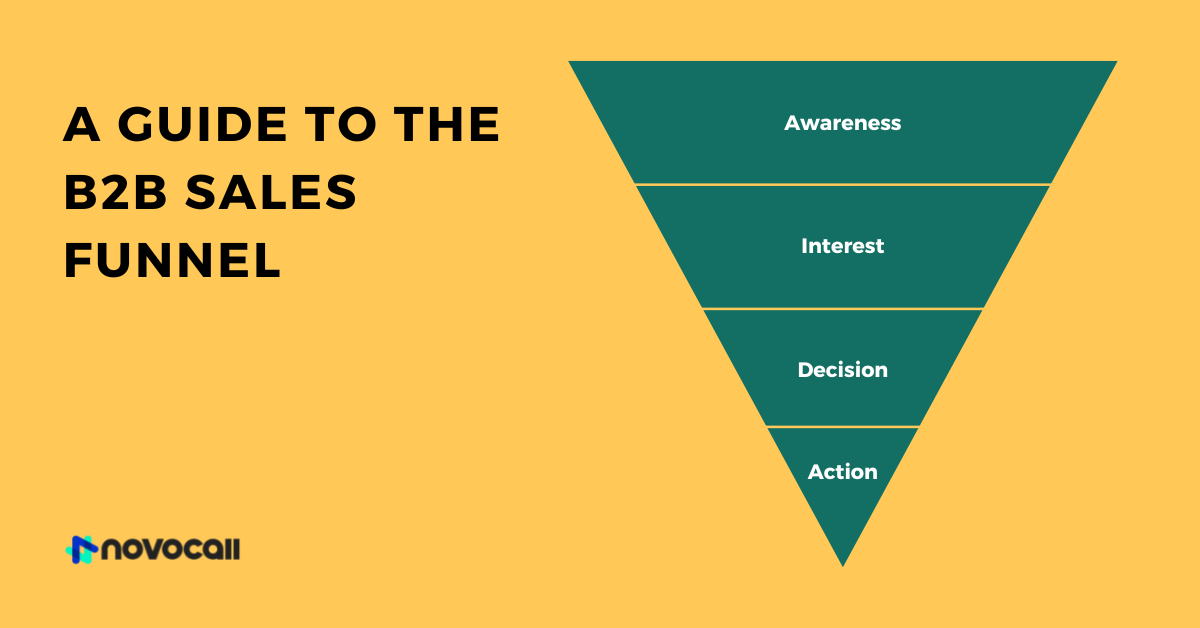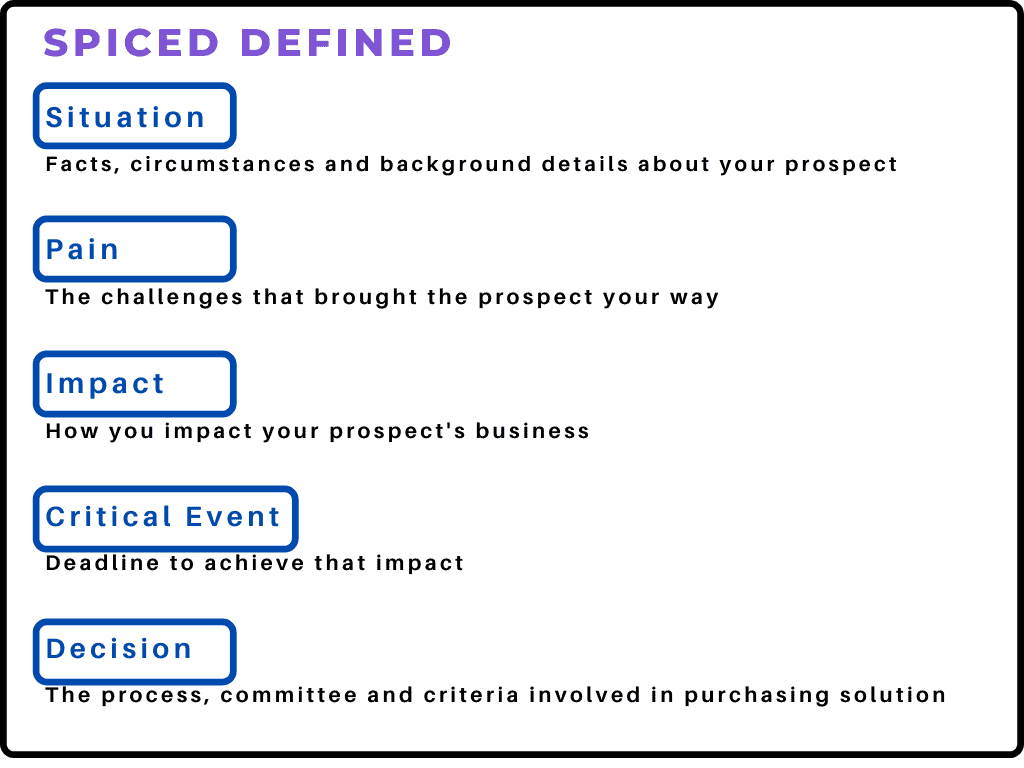


Start driving better conversations.
Novocall will be your new favorite business phone system.


Content Marketing Lead
Lead generation isn’t easy. In fact, a majority of respondents from a survey by Sales Insights Lab found at least 50% of initial prospects aren’t a good fit for their products or services. This means that such prospects have a very low conversion rate, no matter how hard you try to convince them to buy from you.
Well, this could mean one of two things:
And well, you’ve probably clicked into this article because of the latter.
If done in the right way, sales discovery calls can increase your chances of generating more qualified leads and closing more deals.
If you’re unsure how to get round to eliciting valuable details of your prospect’s challenges and aspirations, this article will help you understand the essence of sales discovery calls. We’ll walk you through the steps of an effective sales discovery call that will let you know if your prospect is a good fit.
Let’s get started!
A sales discovery call is your very first communication with a person who is interested in your product. The purpose of this call is to help you qualify (or disqualify) your prospects and identify the prospects that are a sales opportunity.
To do so, you have to ask them questions about their needs, goals, and challenges. Based on their answers, you are able to decide whether there’s a prospect-to-product match and if they should be moved through the sales process.
Do not mistake a sales discovery call for a cold call, though. You make cold calls to prospects you’ve shortlisted based on your research, but you’ve had no prior contact with them and they have yet to show intent.
💡 Additional read: Cold calling: Nearly everything you need to know
If you face difficulties in connecting with your prospects on the phone and find yourself dialing multiple times before you manage to make a call, you’re not alone. It was found that sales reps try 18 or more times to connect with a prospect.
The right technology can boost your discovery call efficiency by automating all sales phone activities. Such all-in-one business phone systems, like Novocall, come with a great range of functionalities that allow automation of outbound calling and inbound calling processes.
By implementing a business phone system, you’ll be able to automate your sales discovery calls, keep track of your prospects, and gain deeper insights into each call.
Do some research on the prospect so you can know more about them. Look them up on LinkedIn and study some basic details.
Where do they work? How long have they been in the company, and what’s their current position? Do you share any mutual connections?
Also, try to find relevant information that’d help establish a connection between the prospect’s potential needs and your product.
If your prospect doesn’t have a LinkedIn profile, search them on Google to find their social media profiles or personal websites. Make sure to show you did your homework during the discovery call.
Sending a reminder message before the call will result in a higher attendance rate. Text messages offer outstanding reliability and feature an impressive open rate. Also, they provide real-time and unobtrusive means of delivering notifications on any device.
Therefore, using a text messaging service to send SMS reminders can help you make sure you and your prospect are on the same page. In addition, adopting a text messaging platform will enable you to notify them of any changes, updates, and follow-ups.
Did you know that 9 out of 10 customers value the personalization of their experience with a company, and 8 of them would definitely choose a brand that ensures it?
Make your discovery call live to these expectations from the very beginning — Start with questions to break the ice.
A good rule of thumb is using rapport-building questions. When done properly, they help you establish a relationship with your prospect that’s beyond the surface level. Rapport-building questions involve asking personalized and unique questions.
Here are some examples:
Ask icebreaker questions related to the details you found about your prospect on LinkedIn. Make sure to use the prospect’s first name and something that is highly personal. Here are some examples for starting the call.
Talking about personal matters will add a human touch to your conversation and can establish a more relaxed and friendly atmosphere.
Now that you’ve laid the first stone, your next step is to set the agenda. This includes:
This way, you share the decision-making with your prospect, which gives them a sense of having control over the course of your communication.
Having set the right expectations and conversation parameters will help you make sure that the rest of your discovery call goes smoothly.
Truly and attentively listening to your prospect is particularly important at this stage. It will allow you to collect the information required to qualify or disqualify them accordingly. Also, you’ll be able to respond to them and address their objections effectively.
A SPICED framework is a practical approach at this step. It stands for Situation, Pain, Impact, Critical Event, and Decision.

Ask questions to verify your preliminary research and understand more about your prospect’s business, including industry landscape, size of the company, the software they use, and profit goals:
Such questions will help establish how close your prospect is to the profile of your ideal customer.
Now that you know where your prospect’s business stands, it’s time to get a detailed grasp of the challenges they’re facing and make them turn to you as a potential solution.
Ask your prospect questions like:
Now, you can consider matching your product to your prospect’s needs.
How will purchasing your product or service impact your prospect?
This is what you have to identify at this stage clearly. Letting your prospect see your product as a solution to their pain is your primary goal. Highlight the benefits that becoming your customer offers, such as optimized communication and collaboration, savings due to streamlined processes, or increased profits.
The key here is to show how you’re able to add value to them.
Think of questions like:
Positioning your product as a solution to the prospect’s pain points is the first parameter of closing the deal. This is where the “if” becomes “when”, and the answer depends on how urgent solving the problem is for your prospect.
At this stage, you have to get details about the factors that determine the timeline of your prospect.
The critical event is the trigger that drives the prospect towards the purchase. It can be an audit, the end of the fiscal year, or the date of important project completion. Identifying the exact date and the possible negative consequences is important to understand how urgent it is for your prospect to solve their pain point.
Possible questions to ask are:
Having identified the time limitations, you have to dig into the specific decision-making procedure of your prospect’s organization.
It’s time to get details of the decision process, decision-makers, and decision criteria. These parameters largely depend on the size of your prospect’s company and the deal itself. Think of asking questions such as:
By implementing the SPICED framework, you can structure your discovery call in a way that will help you naturally transition from one stage to another while gaining the insights you need to build your strategy for the next steps.
Prospects are less likely to make the ultimate sales decision based on your opinion solely. After all, they’re most likely investing a huge amount of money and could possible affect many people in the organization.
Hence, using real-life examples of how your product solved your customers’ problems is much more compelling than just listing features and benefits.
Tell other customer success stories — this can be your last and game-changing argument. Think of particularly impressive case studies and make sure to provide specific details, such as the exact percentage of your customer’s sales growth, efficiency boost, or revenue increase. Remember that numbers can be exactly what you need to nail the sale.
Your goal at this stage is to sum up and highlight the particular areas in which your prospect will benefit from your product. Sort of like a TLDR.
A good rule of thumb is to specify the potential positive outcomes that they will achieve by buying from you, like reaching their revenue, getting on top of competitors, streamlining their processes, and many others.
There are various strategies you can apply here, but two of them are particularly relevant:
And there you have it — 8 steps to conduct the perfect sales discovery call to generate more leads!
A sales discovery call can determine whether your prospects are qualified and decide what your next steps should be. Adopting the SPICED framework will help you better conduct your discovery calls so it goes smoothly. In addition, you can plan ahead for the call with our pre-call templates.
Now, you can carefully select your strategy and questions to identify your sales-qualified prospects and move them through to the rewarding moment of closing your deal!

Faye is the content marketing lead at Novocall. When she’s not busy writing articles for Novocall’s blog, she spends her time baking and playing with her dogs.
Related articles
Subscribe to our blog
Get insights & actionable advice read by thousands of professionals every week.

